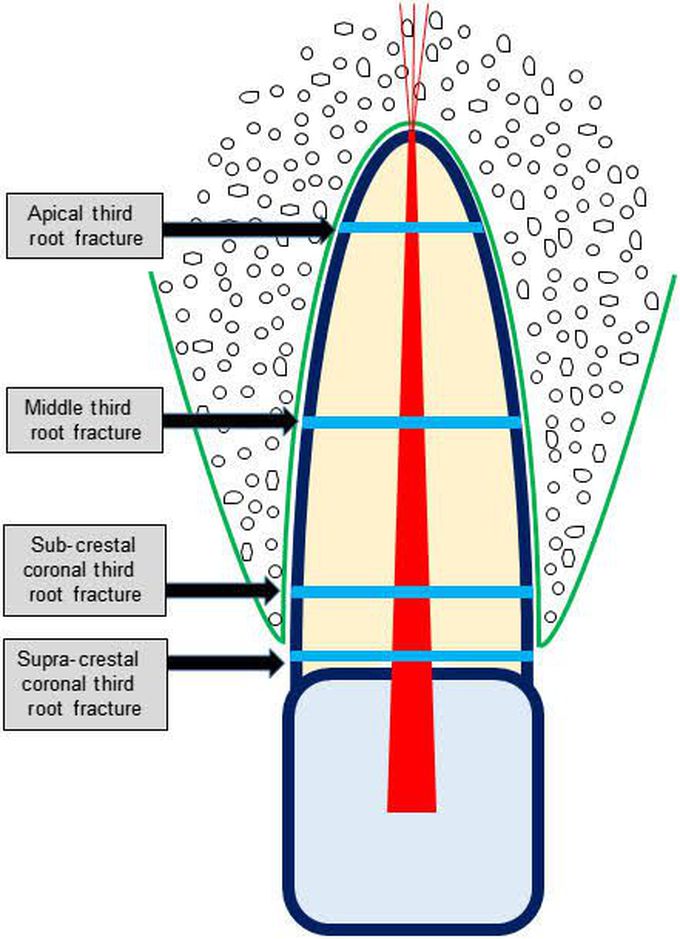


Root fracture
Root fractures are defined as a fracture of a tooth that involves the dentin, cementum, and pulp.1 Root fractures may occur in any direction or orientation, and they are generally classified as vertical fractures (usually also involving the crown) or transverse (often called horizontal) root fractures. Vertical fractures will not be discussed in this article because these injuries usually require extraction of the tooth and replacement with a prosthesis. Although the other group of fractures are commonly called transverse or horizontal root fractures, it is important to understand that such fractures can occur as oblique fractures with varying orientations (eg, more apical toward the palatal surface, more apical toward the labial surface, and so on). In the interest of simplicity in this article, the general term root fracture is used to discuss transverse, horizontal, and oblique fractures. The aim of this article was to review the relevant literature regarding such root fractures in the permanent dentition and to provide guidelines for their management. Root fractures are not a very common injury to the teeth, with studies reporting the proportion of root fractures among all dental injuries ranging from 1.2% to 7.0% in the permanent dentition.1-6 Some studies regarding the incidence of dental injuries have not reported any root fractures although it is not clear whether they did not occur or they were just not considered in the study design, such as retrospective studies in which only clinical examinations were performed and radiographs were not taken.7, 8 It is also possible that some root fractures may not be diagnosed at the time of initial trauma management because they can only be seen via radiographic imaging techniques and at times the fracture may not be evident immediately after the accident if there has not been any displacement of the coronal fragment. Hence, if adequate radiographs and/or computed tomographic scans are not taken and if the teeth are not regularly reviewed in the early posttrauma period, then root fractures may remain undetected. Notwithstanding this, a root fracture is a significant injury that requires dentists to have a thorough understanding of the mechanisms that lead to this type of fracture, the tissue responses to the fracture, the management options for the different types of root fractures, and the prognosis of these injuries. Root fractures are a result of direct trauma to a tooth when there is a horizontal, frontal impact, usually with a hard object or during a fight.1, 9 Small and sharp objects concentrate the force of impact to a smaller area on the tooth, and this typically causes a fracture rather than displacement of the tooth. If the root is the site of impact, then a root fracture is likely to occur. If a hard but blunt object strikes the crown of the tooth, the increased area of resistance to the force in the crown causes the force of the impact to be transmitted to the tooth root, resulting in a root fracture, which is most likely to occur in the coronal (cervical) third of the root.1 Root fractures may occur as a concurrent injury with another injury to the same tooth and specifically to the coronal fragment of the root (ie, the fragment coronal to the root fracture). Such injuries could be a crown fracture, concussion, subluxation, lateral luxation, extrusion, or avulsion of the coronal fragment (Figure 1). The most common concurrent injuries are likely to be concussion or subluxation, but, unfortunately, studies reporting the incidence of the various dental injuries (see earlier) have not reported how often these concurrent injuries occur to teeth with root fractures.

